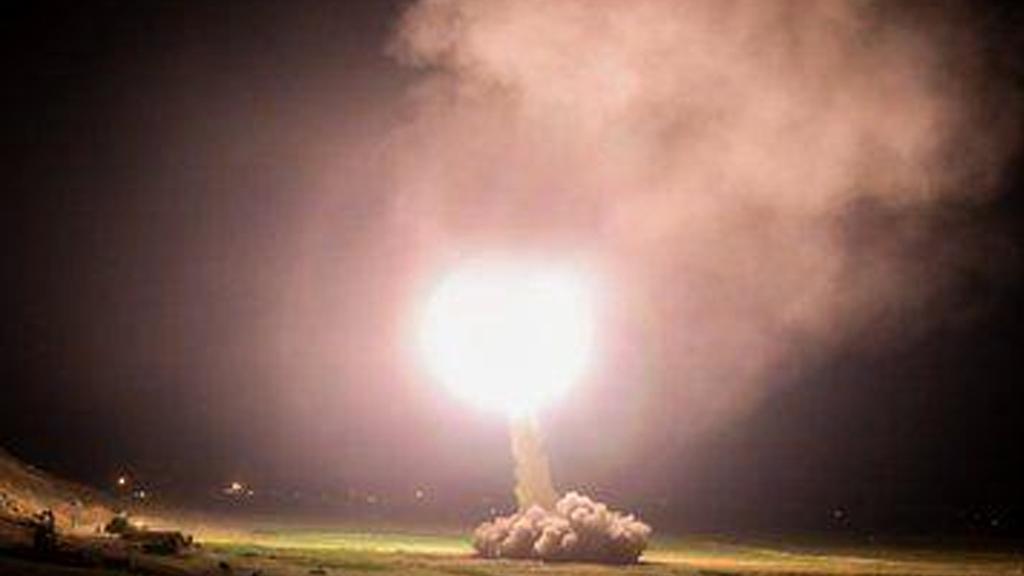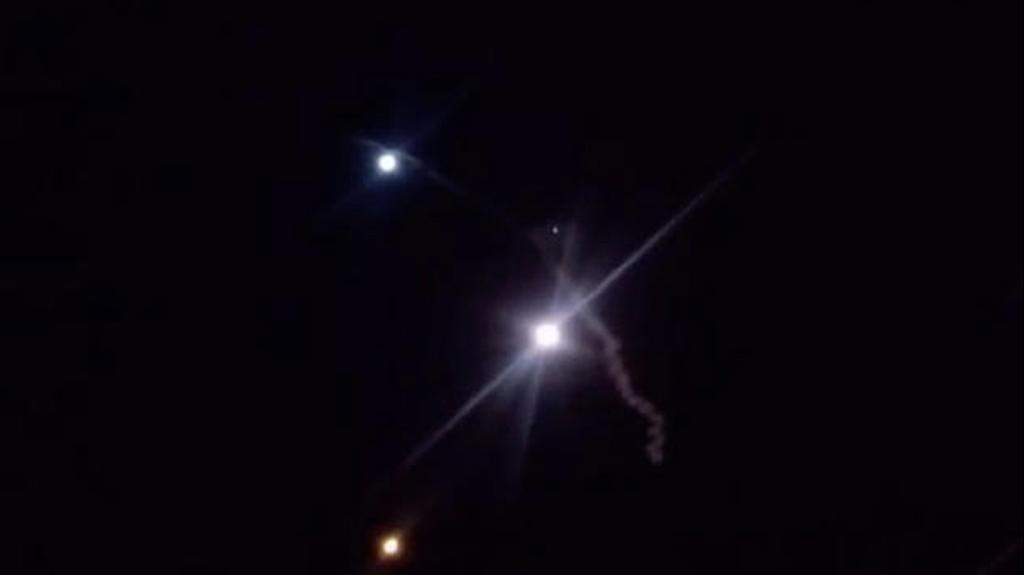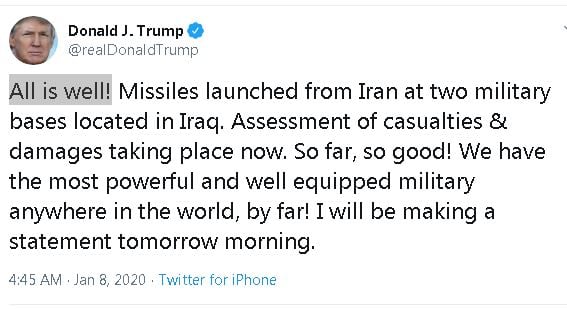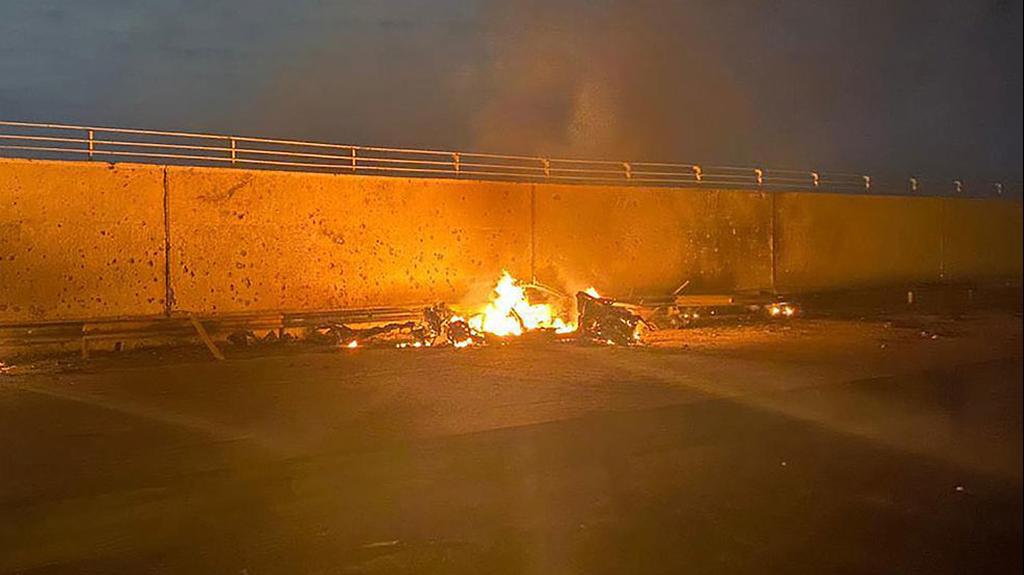Iran struck back at the United States early Wednesday for killing a top Revolutionary Guards commander, firing a series of ballistic missiles at two military bases in Iraq housing American troops in a major escalation between the two longtime foes.
It was Iran’s most direct assault on America since the 1979 seizing of the U.S. Embassy in Tehran, and Iranian state TV said it was in revenge for the U.S. killing of Revolutionary Guard Gen. Qassem Soleimani, whose death last week in an American drone strike near Baghdad prompted angry calls to avenge his slaying. A U.S. and Iraqi officials said there were no immediate reports of casualties, though buildings were still being searched.
The strikes, which came as Iran buried Soleimani, raised fears that the two longtime foes were closer to war. But there were some indications that there would not be further retaliation on either side, at least in the short term.
‘All is well!’ President Donald Trump tweeted shortly after the missile attacks, adding, ‘So far, so good’ regarding casualties. Moments earlier, Iran’s foreign minister tweeted that Tehran had taken “& concluded proportionate measures in self-defense,” adding that Tehran did “not seek escalation” but would defend itself against further aggression.
The killing of Soleimani — a national hero to many in Iran — and strikes by Tehran came as tensions have been rising steadily across the Mideast after Trump’s decision to unilaterally withdraw America from Tehran’s nuclear deal with world powers. They also marked the first time in recent years that Washington and Tehran have attacked each other directly rather than through proxies in the region. It raised the chances of open conflict erupting between the two enemies, who have been at odds since Iran’s 1979 Islamic Revolution and the subsequent U.S. Embassy takeover and hostage crisis.
Adding to the chaos and overall jitters, a Ukrainian airplane carrying at least 170 people crashed outside Tehran on Wednesday morning, state TV reported. There was no immediate word on casualties. The plane had taken off from Imam Khomeini International Airport and mechanical issues were suspected to be the cause, the report said.
Iran initially announced only one missile strike, but U.S. officials confirmed both. U.S. defense officials were at the White House, likely to discuss options with Trump, who launched the attack on Soleimani while facing an upcoming impeachment trial in the Senate,
Iran’s Revolutionary Guard warned the U.S. and its regional allies against retaliating over the missile attack against the Ain al-Asad airbase in Iraq’s western Anbar province. The Guard issued the warning via a statement carried by Iran’s state-run IRNA news agency.
“We are warning all American allies, who gave their bases to its terrorist army, that any territory that is the starting point of aggressive acts against Iran will be targeted,” the Guard said. It also threatened Israel.
After the strikes, a former Iranian nuclear negotiator posted a picture of the Islamic Republic’s flag on Twitter, appearing to mimic Trump who posted an American flag following the killing of Soleimani and others Friday.
Ain al-Asad airbase was first used by American forces after the 2003 U.S.-led invasion that toppled dictator Saddam Hussein, and later saw American troops stationed there amid the fight against the Islamic State group in Iraq and Syria. It houses about 1,500 U.S. and coalition forces. The U.S. also acknowledged another missile attack targeting a base in Irbil in Iraq’s semiautonomous Kurdish region.
The Iranians fired a total of 15 missiles, two U.S. officials said. Ten hit Ain al-Asad and one the base in Irbil. Four failed, said the officials, who were not authorized to speak publicly about a military operation.
Two Iraqi security officials said at least one of the missiles appeared to have struck a plane at the Ain al-Asad base, igniting a fire. There were no immediate reports of casualties from the attacks, according to the officials, who spoke on condition of anonymity as they had no permission to brief journalists.
About 70 Norwegian troops also were on the airbase but no injuries were reported, Brynjar Stordal, a spokesperson for the Norwegian Armed Forces told The Associated Press.
Trump visited the sprawling Ain al-Asad airbase, about 100 miles or 60 kilometers west of Baghdad, in December 2018, making his first presidential visit to troops in the region. Vice President Mike Pence also has visited the base.
“As we evaluate the situation and our response, we will take all necessary measures to protect and defend U.S. personnel, partners and allies in the region,” said Jonathan Hoffman, an assistant to the U.S. defense secretary.
Wednesday’s revenge attack happened a mere few hours after crowds in Iran mourned Soleimani at his funeral. It also came the U.S. continued to reinforce its own positions in the region and warned of an unspecified threat to shipping from Iran in the region’s waterways, crucial routes for global energy supplies. U.S. embassies and consulates from Asia to Africa and Europe issued security alerts for Americans. The FAA also warned of a “potential for miscalculation or misidentification” for civilian aircraft in the Persian Gulf amid in an emergency flight restriction.
A stampede broke out Tuesday at Soleimani’s funeral, and at least 56 people were killed and more than 200 were injured as thousands thronged the procession, Iranian news reports said. Shortly after Iran’s revenge missile attack early Wednesday, Soleimani’s shroud-wrapped remains were lowered into the ground as mourners wailed at the gravesite.
Tuesday’s deadly stampede took place in Soleimani’s hometown of Kerman as his coffin was being borne through the city in southeastern Iran, said Pirhossein Koulivand, head of Iran’s emergency medical services.
There was no information about what set off the crush in the packed streets, and online videos showed only its aftermath: people lying apparently lifeless, their faces covered by clothing, emergency crews performing CPR on the fallen, and onlookers wailing and crying out to God.
Hossein Salami, Soleimani’s successor as leader of the Revolutionary Guard, earlier addressed a crowd of supporters in Kernan and vowed to avenge Soleimani.
“We tell our enemies that we will retaliate but if they take another action we will set ablaze the places that they like and are passionate about,” Salami said.
First published: 07:12, 01.08.20





